Pygmy Nuthatch photos by Larry Jordan
I enjoyed our annual Audubon outing at Lassen Volcanic National Park this last weekend. The first spot I went to check out was at Manzanita Lake where we saw a nesting Pygmy Nuthatch back in 2008. The snag occupied for the past two years was vacant but just across the trail, about thirty feet away, was another snag with several holes, one of which was occupied by a pair of Pygmy Nuthatches.
The Pygmy Nuthatch is a non-migratory bird that lives primarily in Ponderosa and Jeffrey Pine forests. These adult nuthatches were bringing food this early morning, shortly after sunrise, about every five minutes. They would bring an insect, sometimes stop briefly at the entrance, then go inside and peek out the entrance with the insect still in their beaks.
Many times the adult would come back out carrying a fecal sac
This is a common practice of cavity nesting birds and many passerines to keep the nest clean. The fecal sac is a mucous membrane, generally white or clear with a dark end, that surrounds the feces. The nestling usually produces a fecal sac within seconds of being fed and the adult bird takes it from the nest and discards it some distance away.
One of the interesting facts I learned while researching the Pygmy Nuthatch on Birds of North America Online is that they don’t drop their fecal sacs but deposit them on a high limb, wipe their bill, then rap vigorously on the limb. I didn’t know this at the time I took these photos so I didn’t observe this behavior.
I did notice that the nestlings were being fed, as I said, about every five minutes, sometimes with both adults returning to the nest with food at the same time.
Little did I know that the Pygmy Nuthatch is one of the few cooperatively breeding passerines in North America and that a third of the breeding pairs have 1–3 male helpers, usually progeny or other relatives. These helpers feed incubating females, nestlings, and fledglings and participate in defense of the nest site1.
This little guy stuck its head out of the nest after feeding the nestlings and posed for quite some time, allowing me to get some good expressive photographs as the sun began to shine in on the snag entrance. He or she then flew up to a sunny branch above the cavity entrance where I took the opening photo.
More information on this very intersting species:
“The Pygmy Nuthatch roosts in cavities, which it selects depending on season and weather. It picks roosts based on insulation and ventilation provided by roost cavities and relies on hypothermia to survive cold winter nights. Although a few other North American birds are capable of controlled hypothermia, only the Pygmy Nuthatch links hypothermia with protected roost sites and communalism.
Pairs roost together; juveniles roost with parents, and collectives of several flocks roost together. Stacks of 6, 8, and 10 birds, and more, roost together in formations of squares, oblongs, triangles, diamonds, wedges, and tiers. Two articles report more than 150 individuals roosting in one tree.”2
I will be writing on more of the birds of Lassen Volcanic National Park coming up as we counted 60 species during our two day outing! In the meantime, go check out more great bird photos at Bird Photography Weekly!
References: 1, 2 Birds of North America Online

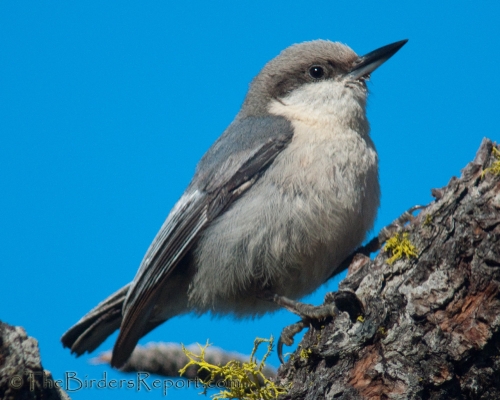
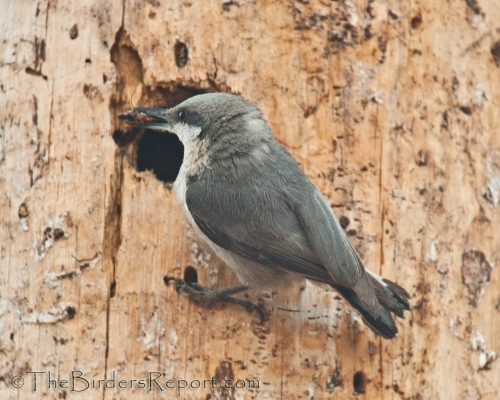
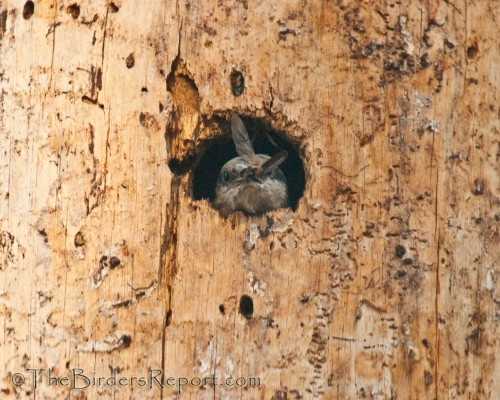
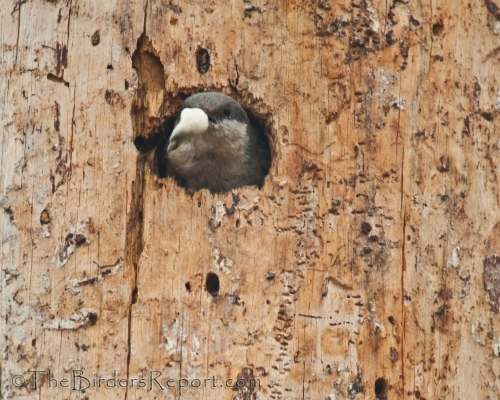
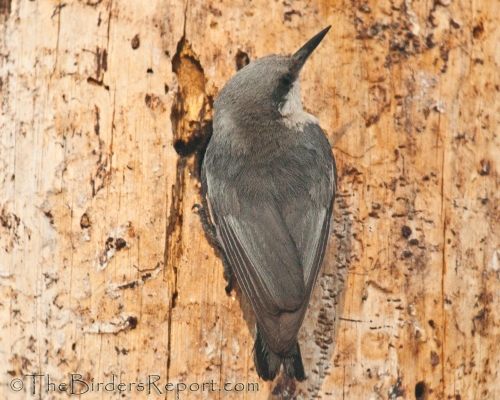
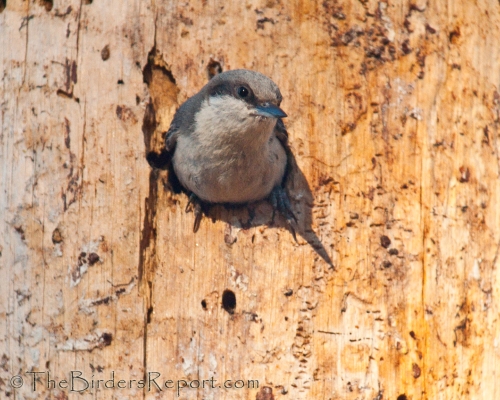








Comments on this entry are closed.
Great post and info on the Pygmy Nuthatches. This one would be a lifer for me. Great photos!
.-= Eileen ´s last blog ..Nature Center Visit =-.
Such a cute little lady. A very interesting post as well. I am only a backyard birder. But I certainly enjoy all kinds of bird photos.
Pygmy Nuthatch is a new one on me Larry but thanks to your pictures and write up I already learnt quite a lot.
.-= Phil´s last blog ..Tools Of The Trade =-.
Very interesting birds and that first photo is a beauty! Cooperative breeding is interesting and certainly gives the young a much greater chance of survival. Excellent capture with the fecal sac also.
.-= Mick´s last blog ..Early Morning Birds =-.
I love nuthatches of all varieties. I don’t often get to see the pygmy nuthatches, so your photos are a special treat!
.-= Wren´s last blog ..north dakota highway to the sky skywatch =-.
i live in san francisco,and i also taking a liking to the pygmies. thanks for enlightening me on several aspects. cooperative breeding explains lots of behavior i observed but couldn’t explain. our birds tend to a bit more bluish with a distinct gray cap.
this was interesting. About everything. Teh cooperative, cleaning and roosting. I learned a lot. And…great photos as usual Larry. 🙂
.-= NatureFooostep Fåglar/Birds´s last blog ..Rödbena – Tringa totanus – Common Redshank =-.
May 20, 2013
I’ve just googled nuthatches today for the first time and discovered your site, among others. I’m not a birder, but I have what I believe to be a pygmy nuthatch who has moved into the area (I live in the foothills of the Cascade Mountains on the high desert of Central Oregon, pine tree country). He feeds from my generous neighbor’s feeder, but what’s interesting about him is that I think he’s gone mad. Today I stood about two feet from my 2nd floor bathroom window and for literally ten minutes I watched him batter the other side of the glass through the small holes of the window screen. He hopped from one spot to another on the screen — sometimes right side up, sometimes upside down, sometimes horizontal — those long feet providing reliable support, and for ten minutes he did not stop — ratatatatat! ratatatatat! ratatatatat! What he was after I have no idea. And… this wasn’t the first time I’ve seen him do it. I’ve seen him once or twice on other days battering away at the metal rim around the edges of the screen. Today he stopped and departed only when a couple of mourning doves landed on the branches of a juniper tree a few feet away from him. I read online the word “endearing” applied to nuthatches, and this little guy is endearing — he’s so intent on whatever it is he’s doing, and so impressive for such a little fellow, with his big feet and his long strong beak and his determination to succeed at something he is obviously not capable of succeeding at. But I suspect my nuthatch is going nuts (pun intended), because nothing he’s doing makes any sense.
@David the males of many species of birds will do this. When a territorial bird, accidentally sees its image in a reflective surface such as a window, or in the mirror or bumper of a car, it perceives its reflection as a rival in its territory and it tries to drive the other bird away. Birds apparently do not have the ability to reason or comprehend the concept of reflection. To a male nuthatch, its own reflection is as much of a rival as real nuthatch would be.
He will eventually give up and tend to his parental duties.